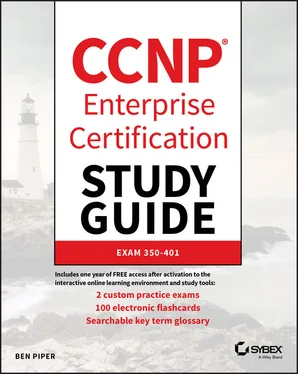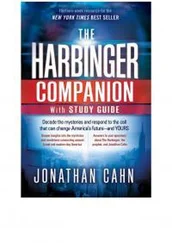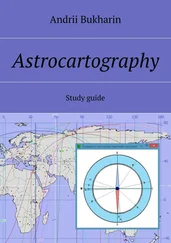Data Link layer protocols such as Ethernet, PPP, and WLAN conceal the details of network interfaces and provide a common frame format that can be used across different media types. Network layer protocols such as IPv4 and IPv6 hide the different Data Link layer protocols in use across different networks. This is why the Network layer is sometimes called the Inter network layer. Applications can use Transport layer protocols such as TCP and UDP to distinguish different communication streams.
The upper layers—Application, Session, and Presentation—have always posed a challenge for the OSI model. It's clear that these are all one layer: the Application layer. What makes Application layer protocols unique is that they are “the end of the line.” That is, there is no higher-layer protocol for an application to pass data up to. Hence, many things that we previously thought of as simply networking protocols are actually applications: ARP, BGP, EIGRP, and OSPF, just to name a few. PDUs generated by these aren't passed up to any higher-layer protocol. When you look at the Application layer in this way, the network suddenly looks a lot simpler.
Understand why IP addresses and MAC addresses name interfaces, not nodes.An interface is bound to a subnet, and a node can have multiple interfaces. Other nodes in the same subnet can't determine whether any two MAC or IP addresses belong to the same node.
Know how switches extend a subnet across different physical media.Switches use flooding to forward broadcasts and unknown unicasts to all connected nodes in a given VLAN.
Understand how routers enable IP connectivity between subnets.When a router receives a layer 2 frame containing an IP packet, it decapsulates the packet and looks at the destination IP address. It checks its FIB to determine the next hop's IP address. If the next hop is reachable via Ethernet, it re-encapsulates the packet in an Ethernet frame addressed to the next-hop node's MAC address and forwards it. If the next hop is reachable via a PPP or HDLC connection, it encapsulates the IP packet in a PPP or HDLC frame and forwards it.
Know the encapsulation and decapsulation process for the protocols at each layer.With the exception of the Application layer, the PDU at each layer contains a reference to a protocol in the layer above. For example, an Ethernet frame contains a Type field that indicates a Network layer protocol, such as IPv4 (0x0800) or IPv6 (0x86DD). An IP packet contains a Protocol field indicating a Transport layer protocol, such as TCP (6) or UDP (17).
Understand the primary purpose of each layer.The Data Link layer facilitates data transfer between two nodes connected to a shared medium. The Network layer enables data transfer between nodes that may or may not be in the same subnet. The Transport layer facilitates application-to-application data transfer and provides error detection.
You can find the answers in the appendix.
1 Which of the following protocols operate at the Physical layer?HDLCIEEE 802.3PPPTwisted pair
2 What protocol operates at the Data Link layer?IPv4OSPFPPPUDP
3 What layer does ARP operate at?2347
4 Protocols at what layer provide for node-to-node data transfer over a shared medium?PhysicalData LinkNetworkTransport
5 What are two examples a single collision domain?A single fiber strand that carries separate light frequencies for sending and receivingWirelessTwo fiber strands, one for sending and another for receivingA twisted-pair cable with a single pair of wires for sending and receiving
6 What can be done to achieve full-duplex communication?Use fiber-optic cablesUse TCPUse different pairs of wires for transmitting and receivingSet the interface speeds to something greater than 10 Mbps
7 Workstation A is connected to a switch port that's in VLAN 10. Workstations B and C are connected switch ports in VLAN 20 on the same switch. Both workstations are configured with IP addresses in the 172.16.7.0/24 range. How many broadcast domains are there?01220
8 A server is connected to a switch. Both the server's network interface card (NIC) and the switch port are configured for full-duplex communication. How many collision domains are there?0123
9 What's the default global aging time for the MAC address table?30 seconds5 minutes1 hour4 hours
10 What occurs when the MAC address table is full?All entries in the table are deleted.The oldest entries are aged out.Frames addressed to a MAC address that's not in the table are flooded.Frames addressed to a MAC address that's not in the table are dropped.
11 What is an Ethernet interface MTU?The minimum size of an Ethernet frameThe maximum size of an Ethernet frameThe speed of an Ethernet interfaceThe maximum size of the Data field in an Ethernet frame
12 Which of the following is a function of a bridge?MAC-based routingIP-based routingConnecting two VLANs togetherReducing the size of a broadcast domain
13 What information does the MAC address table store? (Choose two.)IP addressVLANARP entriesInterface
14 What does ARP do?Maps MAC addresses to IP addressesMaps MAC addresses to interfacesMaps IP addresses to MAC addressesMaps IP addresses to interfacesMaps MAC addresses to VLANs
15 Client A in VLAN 3 has the IP address 172.16.3.3/24. Server A in VLAN 4 has the IP address 172.16.3.10/24. What will occur if client A attempts to ping Server A? (Choose two.)The ping will succeed.Client A will send an ARP request for 172.16.3.10.The ping will fail.Server A will send an ARP reply.
16 What destination address is an ARP request sent to?The MAC address 0000.0000.0000The MAC address FFFF.FFFF.FFFFThe MAC address 0100.5E01.0001The IP address 255.255.255.255
17 What destination address is an ARP reply sent to?The IP address that sourced the ARP request255.255.255.255FFFF.FFFF.FFFFThe MAC address that sourced the ARP request
18 What's the default ARP entry timeout on Cisco routers and switches?5 minutes1 hour4 hours6 hours
19 What's the purpose of TCP connection establishment?Error controlSynchronization of sequence numbersReservation of bandwidthSynchronization of polling intervals
20 What is the IP protocol number for TCP?161789
Chapter 2 Spanning Tree Protocols
THE CCNP ENCOR EXAM OBJECTIVES COVERED IN THIS CHAPTER INCLUDE THE FOLLOWING:
Domain 3.0: Infrastructure✓ 3.1 Layer 2
 Unlike IP packets, Ethernet frames don't have a time-to-live (TTL) to prevent routing loops. That means if a LAN is configured in a physical loop, it may blindly forward the same frame over and over again. Switches don't keep track of frames they've already seen, so in a looped topology, a switch actually ends up multiplying the same frame in the network each time it forwards it! Eventually, this consumes all available bandwidth and pegs the CPU on each switch, causing a network meltdown.
Unlike IP packets, Ethernet frames don't have a time-to-live (TTL) to prevent routing loops. That means if a LAN is configured in a physical loop, it may blindly forward the same frame over and over again. Switches don't keep track of frames they've already seen, so in a looped topology, a switch actually ends up multiplying the same frame in the network each time it forwards it! Eventually, this consumes all available bandwidth and pegs the CPU on each switch, causing a network meltdown.
The goal of STP is to impose a loop-free logical topology by strategically dropping certain Ethernet frames on specific interfaces (what STP calls ports) to prevent them from endlessly looping through the network. Radia Perlman began work on the original STP (802.1D) in 1984. Because this was prior to the widespread use of VLANs, 802.1D worked by simply blocking interfaces, a logical choice since the physical topology and the logical topology were the same. An interface could be a member of only a single LAN.
The advent of VLANs required a different approach. Each VLAN represented a different logical topology such that one VLAN might be configured in a loop while another VLAN would be loop-free. No longer could STP prevent loops by blocking interfaces. Instead, it had to determine the logical topology of each VLAN, and then selectively drop any Ethernet frames that might cause a loop—an approach called Per-VLAN Spanning Tree (PVST). Much of Spanning Tree's reputation for being complicated is due to this decoupling of the physical and logical topologies. It's not that Spanning Tree itself is hard to understand but that it behaves differently depending on the VLAN.
Читать дальше

 Unlike IP packets, Ethernet frames don't have a time-to-live (TTL) to prevent routing loops. That means if a LAN is configured in a physical loop, it may blindly forward the same frame over and over again. Switches don't keep track of frames they've already seen, so in a looped topology, a switch actually ends up multiplying the same frame in the network each time it forwards it! Eventually, this consumes all available bandwidth and pegs the CPU on each switch, causing a network meltdown.
Unlike IP packets, Ethernet frames don't have a time-to-live (TTL) to prevent routing loops. That means if a LAN is configured in a physical loop, it may blindly forward the same frame over and over again. Switches don't keep track of frames they've already seen, so in a looped topology, a switch actually ends up multiplying the same frame in the network each time it forwards it! Eventually, this consumes all available bandwidth and pegs the CPU on each switch, causing a network meltdown.










